At any garden plot, the problem of permit is always very acute. Pests are climbing the tree trunk to the most lackless parts - leaflets, flowers, and later spoil and ripe fruits. In such trials, they may not just harm the plant, but also fully disappear. The experienced gardeners know that one of the best ways to overcome hated insects - the animal belt. Today the article will tell how to make a curious belt for trees with your own hands.
Device of a leather belt
Lovely belt is a wide band (20-25 centimeters) from various materials for collecting and destroying insect pests on the trunk and tree branches. It is considered a mechanical type of plant protection, and therefore safe for humans. Cutting belts are most effective for insects that descend on the ground for poking, and after this process rise upwards again for further livelihoods. Best suited to combat:
- caterpillar apple
- pear Caterpillar;
- plum fruit;
- burchak;
- barrel;
- cherry weevil;
- gray kidney weevil;
- apple cloth, etc.
Cutting belts are made from a variety of materials. Popularity is popular, package, straw, vehicle, rogger, corrugated or simply dense paper, polyethylene film and other types of light-tight materials. Ready-to-use wide bands are fixed on the lower part of the strabs, on average, 40-50 centimeters higher from the ground. As the pest accumulates to catch the belt, it is cleaned. And with a large number of insects, it is removed and burned.
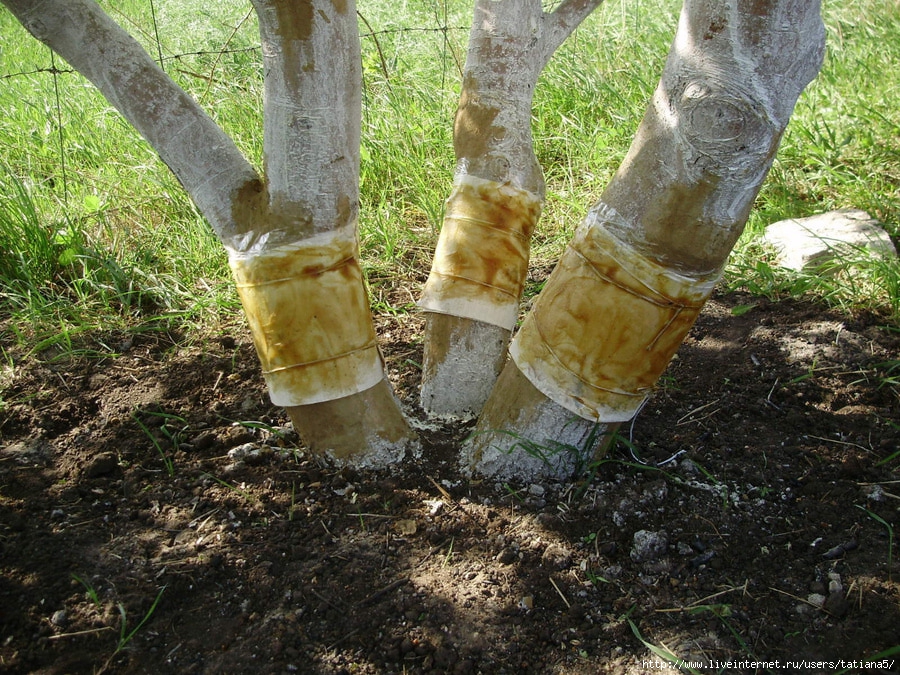
Varieties of delicate belts
There are three varieties of leaky belts:
- dry;
- poisonous;
- sticky.
Each species has both its advantages and disadvantages that need to be considered when choosing a leakage belt. But there is one joint plus - each of these belts is very easy to make with their own hands.
Dry Love Belt with your own hands
Dry curiy belts in summer cottages are more common. Many gardeners rated their environmental friendliness, others - ease of manufacture. In modern gardening varieties of dry belts there is a huge set. Below are the most popular of them.
Funnel

The most common types of dry leaks from pests are "funnels". This name appeared not only due to a specific appearance, but also the effect of "retracting" insects inside the trap. It is quite simple to make a belt-funnel, it is only necessary to comply with the instructions.
- A cardboard either paper sheet of paper thick on average 20 centimeters robbing around a tree trunk at an altitude of approximately 50 centimeters from the ground. You must get a winding of a cone-like form, the so-called skirt. That is, the top of the sheet must be tightly pressed against the tree trunk, and there should be a lumen between the bottom side and the bark of the tree.
- From above, as close as possible, fix the sheet to the tree trunk with a harness or twine.
- Mind the remaining passes of clay.
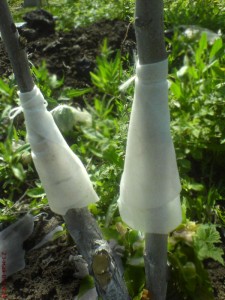
Gate.
The second common view of the leather belt is the gate. It is also quite simple to make it and, moreover, it often turns out to be the most practical and inconspicuous of all the proposed options.
- Tale of the tree parameters, in particular, the trunk circle is approximately 50 centimeters from the ground.
- According to the above parameter from rubber, we cut a small sheet with a thickness of 4-5 millimeters.
- We sell the resulting rubber strip around the tree, so that it turned out a peculiar gate with curved edges.
- We glue the ends of the strip with rubber glue.
- In the resulting "container" pour a small amount of sunflower oil. Sometimes it is diluted with a decoction of the tree leaves, on which the belt is fixed.
The belt-gate will need to be changed as the tree grows, purify from the bugs that fell into the trap and periodically pour sunflower oil.
Bilateral funnel
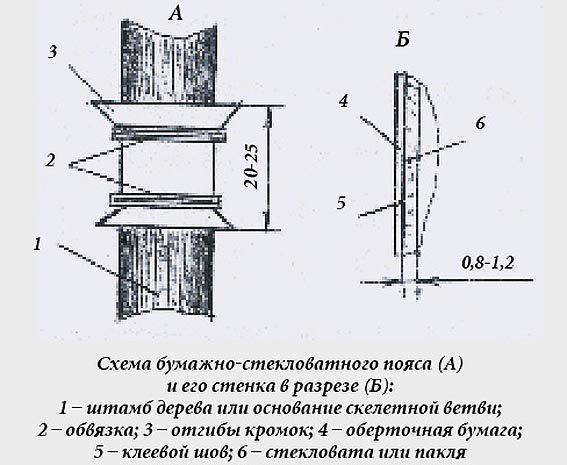
The catcher belt on the type of bilateral funnel is used in summer cottages. Quite often. This type of trap prevents both climbing the hordes of insects up the trunk and their descent during the pounding period. It is also not to make it a good job.
- A paper strip of about 30 centimeters widths around the tree, visually dividing into three parts.
- Fix the belt in the middle as possible, and the top and bottom leave in the form of a skirt.
- From the inside of the trunk, where the paper comes into contact with the barrel, making the clay all the remaining passages.
Poisonous Love Belt With Your Hands
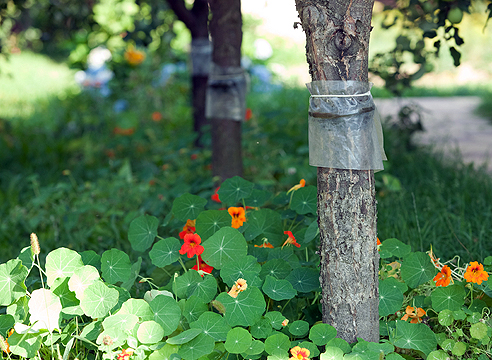
Poisonous, or, as they are often called, the suicide belts are not as common among gardeners, but still deserve special attention. Most dachants do not use the drawing belts of this type due to prejudice, which and ripe fruits will contain toxin. This statement is completely not justified, because this adaptation to combat pests is attached at the foot of the tree and the pesticides cannot "get up" up on the trunk. Another advantage of poisonous belts is effective. Be sure to try the suishing belt on your garden plot. It is very easy to make it.
- Take the flap of paper, burlap or other similar material width of 20-25 centimeters.
- Impress the belt insecticide (allowed to use poison).
- Secure on the tree trunk, at an altitude of 40-50 centimeters from the ground, so that the skirt turned out.
- The top of the belt additionally fix the film to drag the weathering of poison.
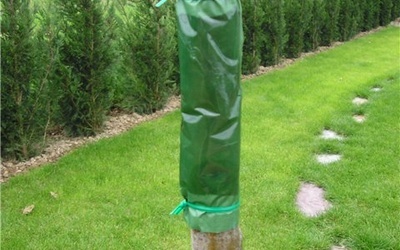
Finding into a suicide trap, insects cannot find a way out and die from poisonous evaporation. To a greater extent, poisonous drawing belts for apple trees are intended. In this fruit tree, they have the best effect not missing the "flock" of the caterpillars.
Sticky lip belly

Sticky belts are often used in a complex with other types of traps, but also separately from others they sufficiently help gardeners in the fight against pests. In particular, adherent sticky curbs from ants, bugs and Huses, who bypass almost all kinds of traps of another type. On the device "Velcro" is also elementary as the above-described devices.
- Prepare craft-paper flap so that it responds to the trunk circle. Width - 20-25 centimeters.
- Slip one side of the belt with special glue, which can be purchased in the horticultural store. Also, as an option is suitable resin or tar.
- The belt, as possible to grip on the tree with a sticky side to the top.
- To smell clay the remaining "passages" both higher and below the belt.
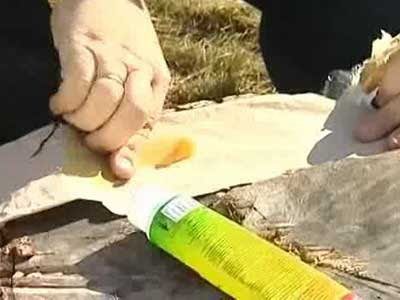
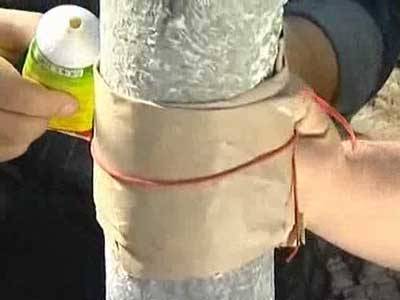
Lovely belt for trees is a simple invention. Despite this, due to its effectiveness and environmental friendliness, he fell in love with many gardeners. These simple traps are capable of complicating the life of pests thousands of times, and over time and overcome them.

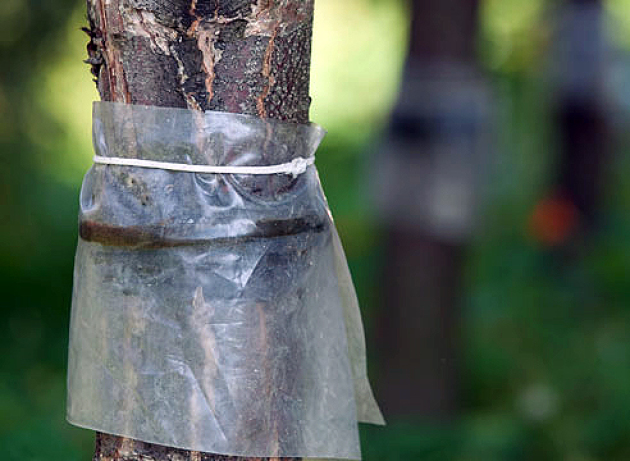


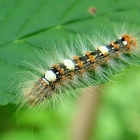





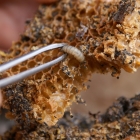


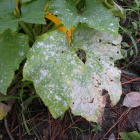
 Start a discussion ...
Start a discussion ...